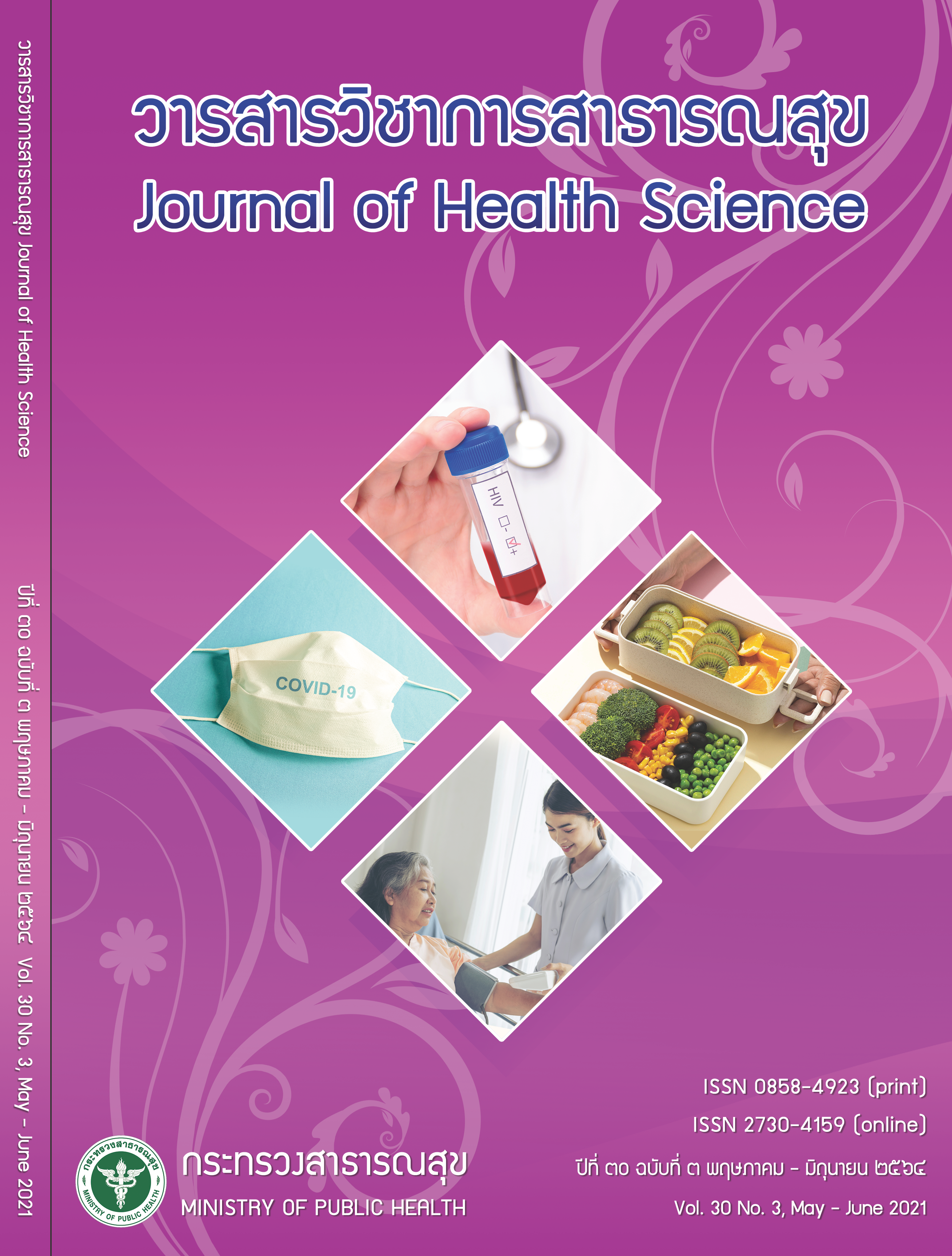Diagnostic Accuracy of Spot Urine Albumin to Creatinine Ratio versus Urine Protein to Creatinine Ratio for the Diagnosis of Proteinuria in Suspected Preeclamptic Women
Keywords:
preeclampsia, urine albumin to creatinine ratio, urine protein to creatinine ratio, significant proteinuriaAbstract
Twenty-four hour urine protein measurement (UP-24) is the standard method for the detection of proteinuria. However, it is inconvenience and time consuming. A spot urine albumin to creatinine ratio (UACR) or urine protein to creatinine ratio (UPCR) is alternative option that approach yield advantages in terms of more rapidity and convenience. The objective of this study was to compare the accuracy of UACR and UPCR with UP-24 in pregnant women with suspected preeclampsia. This prospective study was conducted on suspected preeclamptic women with gestational age above 20 weeks. The study samples were 95 pregnant women attending Roi-Et Hospital during April to October 2019. Random urine sample for UACR, UPCR and UP-24 collection were examined. It was found that the mean age of the samples was 29.2±6.95 years. The prevalence of significant proteinuria (UP-24 >300 mg) was 62.1% (95%CI: 51.6-71.7). UACR (>300 mg/g) had sensitivity, specificity, positive and negative predictive value and accuracy of 23.7%, 97.2%, 93.3%, 43.6% and 51.6%, respectively; and those of UPCR (>0.3 mg/g) were 85.5%, 89.0%, 92.6%, 76.1% and 86.3%, respectively. The area under receiver characteristics curves (AUC) of UACR and UPCR were 61.4% (95%CI: 50.0-72.8) and 89.2% (95%CI: 82.7-95.7), respectively. UPCR showed better accuracy with UP-24 than UACR as an alternative screening test for prediction of significant proteinuria in suspected preeclamptic women.
Downloads
Downloads
Published
How to Cite
Issue
Section
License

This work is licensed under a Creative Commons Attribution-NonCommercial-NoDerivatives 4.0 International License.







